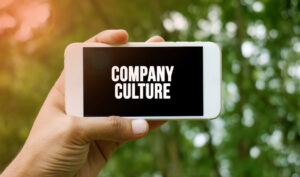
A Bad Workplace Culture Can Result in a Disaster, No Matter the Industry
A bad workplace culture is a hazard in itself. But even a mediocre one can contribute directly to a disaster. NASA won awards for being

A bad workplace culture is a hazard in itself. But even a mediocre one can contribute directly to a disaster. NASA won awards for being

Sponsored by Culture Amp How important is culture to your organization right now? As people and culture leaders, you know that putting time, effort, and

Sponsored by: RocketReach Hiring teams know just how hard it is to find candidates who hit the mark with both soft skills and technical skills.

Are you looking for proven ways to drive employee engagement? Many organizations find that collaboration is a highly effective strategy. For instance, consider these 10

If you’re ramping up for Q4 in your workplace, you may be anticipating a slew of quarterly performance reviews. It’s your manager’s last chance of

Sponsored by: Empath In today’s world of work— agility matters — and how we enable our own employees to meet our company goals, is vital.

Sponsored by: RocketReach Recruiting challenges face every organization — one that is particularly daunting for smaller companies and fast-growing startups. As agility is often a

Burnout and dissatisfaction at work are nothing new. In fact, a recent Gallup study found that more than one-half of American workers feel disengaged at

We bought mental health tools, but has everyone bought in? Many companies understand the importance of promoting mental health in the workplace. As a result,

Sponsored by: Cristaux International Kids are known for complaining when things aren’t fair. Although professional adults may not be as obvious as children, they do

As a business leader, you want to keep employees engaged at work and encourage company loyalty. How does the empathetic workplace blend in with those

Sponsored: Orion Talent I am a staunch advocate of veteran hiring. It is a smart business decision with a positive impact on everything from profitability to

Many business experts champion trust in the workplace. They include the likes of Stephen Covey and my dear friend, David Horsager. (His 8 Pillars of

It’s been a hard year and a half, and as the pandemic continues to fluctuate, illness and lockdowns have taken their toll. The effects extend

The workplace is becoming more diverse as organizations offer remote and hybrid work options and build a global workforce. With these big changes comes a

In the modern workplace, a respectful workplace culture isn’t just a cherry on top of a job role. If the work culture isn’t healthy and

Do we need to worry about toxic workplace culture now, in the midst of an exhaustingly protracted pandemic that’s badly straining employers and employees? It’s

Companies have specific priorities to help them create traction and build better businesses. They make sure their finances are going well, remain competitive, and engage

With people talking about a post-pandemic restart to the economy, your business might be looking to bring in a fresh new outlook. If you’ve so

When was the last time a colleague said something so ridiculous that it made your jaw drop? A four-year study by LeadershipIQ.com found that employers

It’s safe to say that 2020 put company cultures to the test. Strong cultures came out of it stronger; weak cultures struggled to survive. But

Emotional intelligence, or EQ, has been a regular topic in the workplace for some time now. And yet, in these uncertain times — and while

When is a company culture intervention necessary? And how do you know if your company needs to hear some hard truths? The truth is that

How do leaders create a culture that features contagious corporate altruism? Historically, shareholder capital return has been the holy grail of business success. Significant returns

In every challenge faced, there are leadership lessons to be learned… To say the recently concluded American election process was emotional would be an understatement.